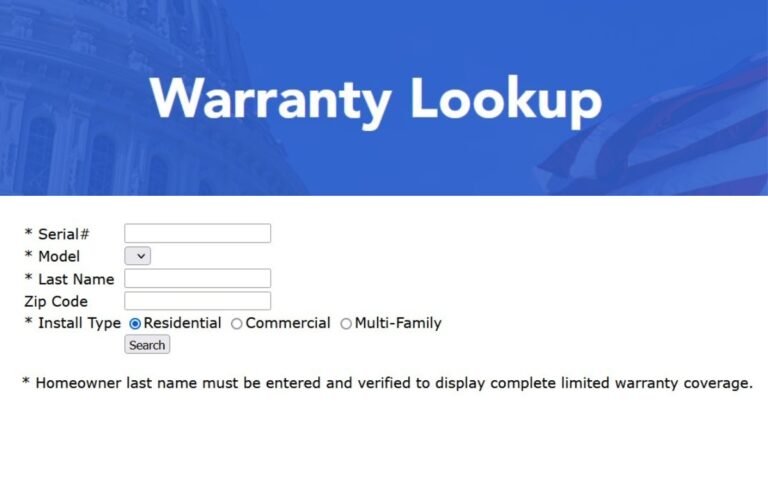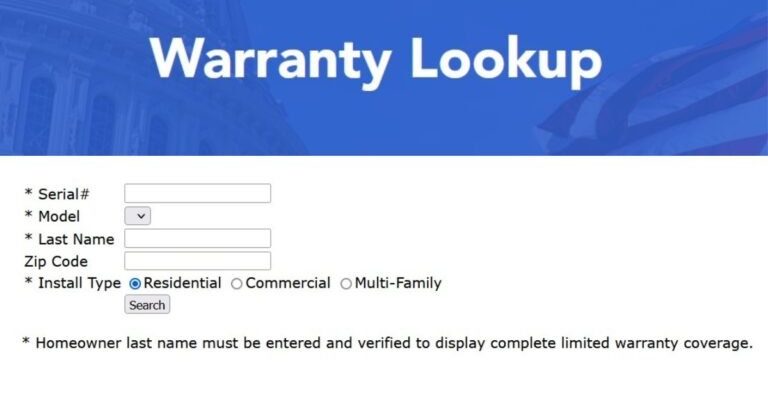
Here’s the thing: Goodman manufactures some of the most popular heating and cooling systems across North America. If you’re like most folks, that means you probably didn’t pour over your paperwork the day your HVAC was installed. Maybe your dog chewed the manual. Maybe it’s buried under a year’s worth of junk mail. Either way, the warranty details can feel elusive—like trying to remember the WiFi password you set three years ago. Let’s sort this out together so you’re not left in the heat (or the cold) when something goes sideways with your Goodman unit.
Why Understanding Your Goodman HVAC Warranty Matters
Most people don’t pay much attention to warranties—until they need them. But knowing *where* to find your Goodman warranty and *what* it actually covers can make a huge difference when problems pop up. Imagine discovering your major repair could’ve been free, but the claim window closed because you didn’t register on time. Ouch, right? Honestly, a warranty is like the seatbelt for your HVAC investment. You hope you never need it, but you’ll thank yourself for buckling up.
With Goodman HVAC systems, warranty terms can vary. Some cover parts for a decade, while others throw in extra years if you register your purchase right away. It’s the difference between a standard umbrella and a golf umbrella during a downpour—one will keep you a lot drier. And if you ever sell your house, having clear warranty info can actually boost your home’s value. Buyers like knowing they won’t be left in the lurch, either.
So, where do you even *start* looking? The warranty isn’t always taped to the side of your furnace, and not every installer is as organized as your favorite barista. We’ll get into the details, but trust me—this is worth your time.
Check Your Installation Paperwork First
Let me explain: The absolute easiest way to find your Goodman HVAC warranty policy is to dig out the paperwork you received when the unit was installed. Most reputable installers provide a folder, envelope, or binder with all the important docs. If you’re lucky, it’s right next to your user manual and the receipt (bonus points if you still have the magnet they gave you).
Inside that pile, you’re usually looking for a page labeled “Warranty Certificate,” “Product Registration,” or “Terms and Conditions.” Sometimes it’s just a card with a model and serial number, directing you to register online. This paperwork should outline not only *how long* your coverage lasts, but also *what* parts or labor are included.
But let’s be real: Not everyone saves every slip of paper. Maybe your installer went paperless, or you inherited the HVAC system from the last homeowner. No worries—there are other ways to hunt down your warranty details.
Use the Goodman Website and Online Warranty Lookup Tools
Here’s where technology saves the day. Goodman’s official website has tools that make finding your warranty status surprisingly simple. You’ll just need your unit’s *model* and *serial number*—these are like your HVAC’s fingerprint. Both numbers are usually found on a silver sticker on the outdoor condenser unit, or inside the furnace door. If you can’t spot them, don’t be shy—grab a flashlight and check every label.
Once you’ve got those numbers, head over to Goodman’s Warranty Lookup page. It typically asks you to enter your serial number and click a button. In seconds, you’ll see the coverage details for your exact system:
- How many years are left?
- What parts are covered?
- Is labor included?
- Are there any registration requirements?
If online lookup is glitching or you hit a roadblock with missing numbers, most sites also offer live chat or a support phone number. It’s not quite as instant as a Google search, but it beats flipping through dusty paperwork for hours.
For quick warranty lookup: Locate your model and serial numbers, then use Goodman’s official online tools. Don’t skip this step—it gives you the most accurate, up-to-date info.
Understanding the Types of Goodman HVAC Warranties
You might be wondering, “What kind of warranty do I even *have*?” Goodman offers different levels of warranty coverage depending on the model and when it was bought. Here’s a quick breakdown:
- Standard Limited Warranty: Most systems come with a basic coverage—typically 5-10 years for parts. No registration? You probably fall into this group.
- Registered Limited Warranty: If you registered your Goodman HVAC system within 60 days of installation, you might qualify for extra perks. This usually bumps parts coverage up to 10 years, and sometimes adds more.
- Lifetime Compressor Warranty: Certain high-end Goodman units include lifetime coverage for the compressor (the heart of your AC). Pretty generous, if you ask me.
Why does this matter? Each type carries different protection—and knowing which one you have makes the difference between a quick, free repair and an unexpected bill. Always check what your warranty *doesn’t* cover too (like labor costs or problems caused by improper installation).
If you’re unsure which warranty applies, circle back to the paperwork or online lookup tool. It’s a bit like checking the rules before starting a new board game—you’ll have a smoother experience if you know what to expect.
Registering Your Goodman HVAC System—And Why It Matters
Here’s a story: My neighbor got a shiny new Goodman system. But nobody told her she *had* to register it within 60 days. She found out the hard way, years later, that her coverage was only half what she expected. Oof.
Registering your Goodman HVAC system is more important than most people realize. It’s like syncing a new phone—you want all the features unlocked. Registration usually requires basic info: your contact details, install date, and those model/serial numbers again. The process is fast—just fill out the form on Goodman’s official registration page.
If you missed the deadline, don’t panic. You’re still covered by the *default* limited warranty, just not the extended perks. But for anyone reading this before or right after their install, don’t skip this step. Investing five minutes here can save you big money and headaches in the long run.
Pro tip: Always ask your HVAC installer if they handle the warranty registration or if it’s on you. Get proof either way!
If You Bought Your Home With an Existing Goodman System
Moving into a new home with a Goodman air conditioner or furnace already in place? You might assume the warranty is lost, but that’s not always true. In many cases, Goodman warranties can transfer to new homeowners—*if* you follow some steps and act quickly.
First, try to get the original purchase information from the prior owner or real estate agent. The more details you have—like model, serial number, install date, and proof of registration—the smoother things go. Some warranties only transfer if you fill out a form (usually within 30–60 days of closing), and others may require a fee.
If you can’t reach the previous homeowner, don’t give up. Use the online warranty lookup or call Goodman’s support number. Explain your situation. They deal with these requests all the time and can guide you on whether your coverage is still valid, needs to be transferred, or if you’re out of luck.
Remember, most brand warranties (not just Goodman) exclude coverage if the system was moved or tampered with, so double-check everything before banking on free repairs.
When to Contact Goodman or a Licensed HVAC Professional
Sometimes, even after all your searching and clicking, things still don’t add up. Maybe your serial number isn’t recognized, or the warranty page throws an error code. Maybe you’re not sure if a specific repair is covered. This is when it’s smart to loop in the experts.
Start by calling Goodman’s customer support. They’ll walk you through the warranty status, explain your coverage, and answer any lingering questions about parts or labor. If you’re facing an urgent breakdown, a licensed HVAC technician can also help you navigate warranty claims—they deal with this stuff every day.
What you should *not* do: Try to fix major HVAC issues yourself, or have an unlicensed handyman poke around your system. That can actually void your warranty, leaving you on the hook for future problems. Always document communication with Goodman or your installer—dates, names, steps taken. It’s like keeping receipts, just in case.
Comparing Goodman’s Warranty to Other HVAC Brands
You might be sizing up Goodman against other giants like Trane, Carrier, or Lennox. Here’s what to know: Goodman’s warranties are generally more robust than many competitors, especially if you register your unit on time. Lifetime compressor coverage on select models is a stand-out perk.
That said, some rivals bundle in labor coverage or no-registration policies as standard, which can be a relief if you’re the forgetful type. Others make you mail in warranty cards (seriously, in 2024?) or tie benefits to using only their branded replacement parts.
When choosing a system or troubleshooting a warranty claim, weigh both the *breadth* of coverage (what’s included) and the *ease* of making a claim. Goodman’s digital support tools are a point in their favor, but always read the fine print—no matter which brand you’re comparing.
What to Do If Your Warranty Claim Is Denied
Not every claim gets a green light. If Goodman—or your installer—denies a warranty claim, don’t lose hope just yet. First, ask for a clear, written explanation of the denial. Sometimes it’s a paperwork glitch, missing registration, or a misunderstanding about what’s actually covered.
Review your warranty policy line by line. If you have proof you followed all required steps—like sync’ing the registration on time and getting professional installation—push back politely. Escalate to a supervisor or put your request in writing. Many homeowners find claims get reconsidered once more details are shared.
If all else fails, you might consider small claims court or a third-party warranty provider, especially for big-ticket repairs. But most folks find that, with patience and a little back-and-forth, Goodman’s warranty team is reasonable and willing to work toward a solution as long as everything checks out.
Closing Thoughts: Stay Proactive With Your Goodman HVAC Warranty
HVAC warranties can feel like decoding a secret language—lots of fine print, hidden requirements, and odd little hoops to jump through. But here’s the upshot: If you take a few minutes to locate your Goodman warranty policy and register your system, you’re already way ahead of the game. That simple prep work can save you time, cash, and a mountain of stress down the line.
So, whether you’re tracking down paperwork, navigating Goodman’s online tools, or chatting with support, remember—you don’t have to handle this alone. Warranties exist to give you peace of mind, not a headache. Keep your model and serial numbers handy, ask lots of questions, and don’t be afraid to lean on the experts if you get stuck. Your future self (and your wallet) will thank you.
